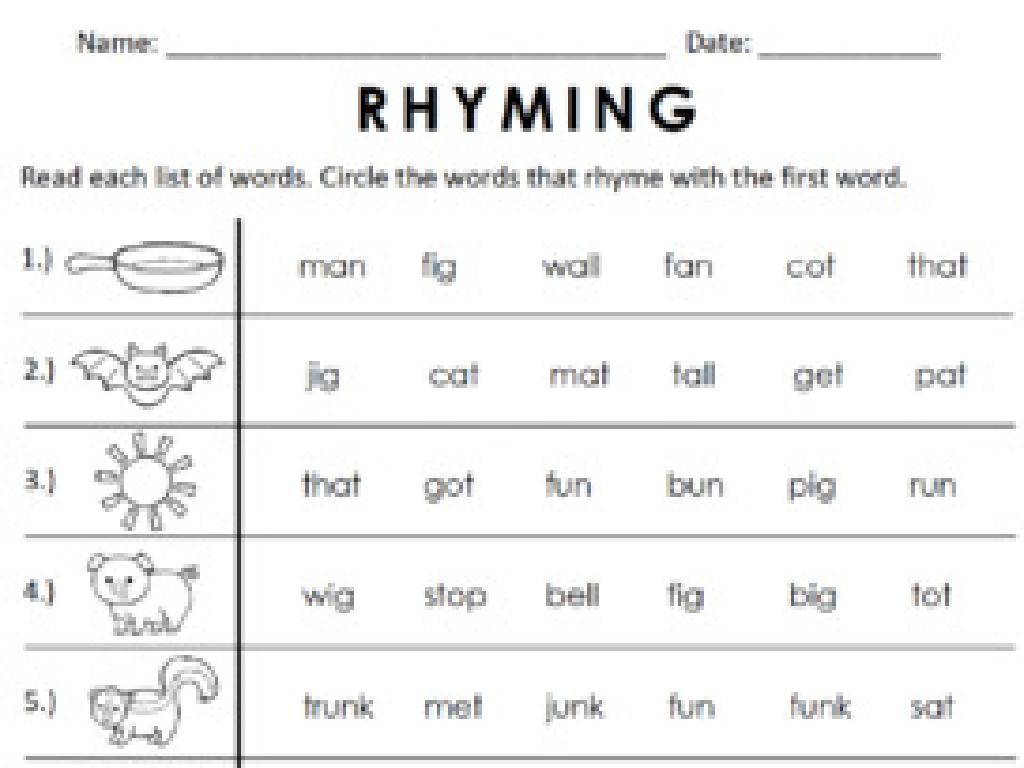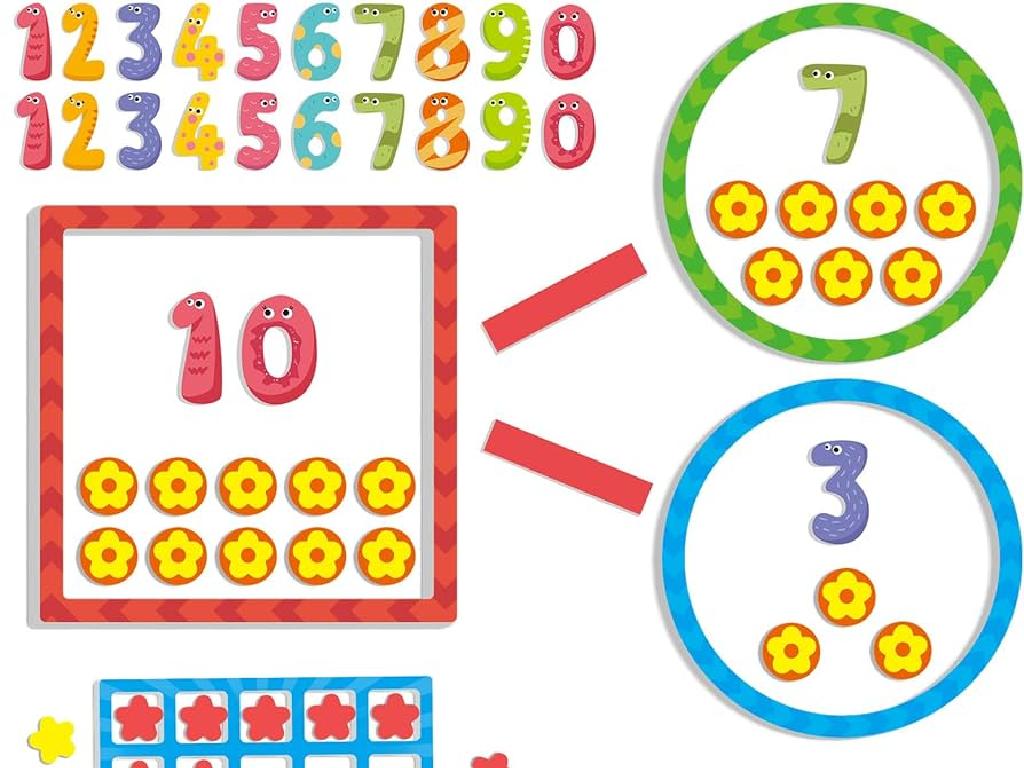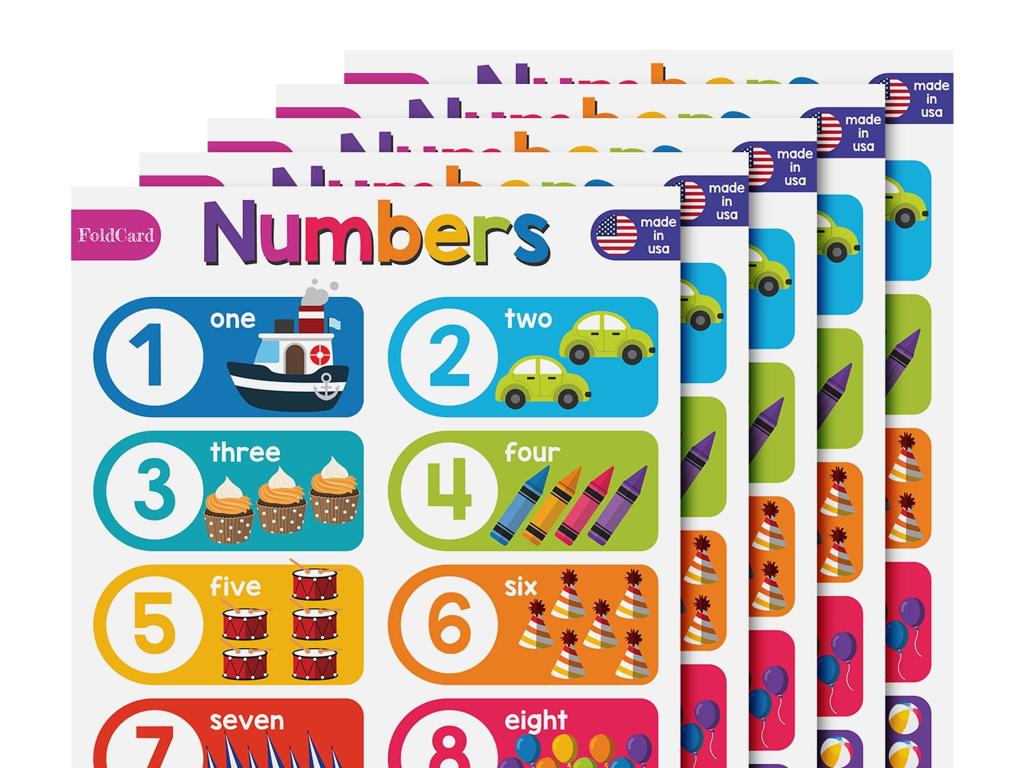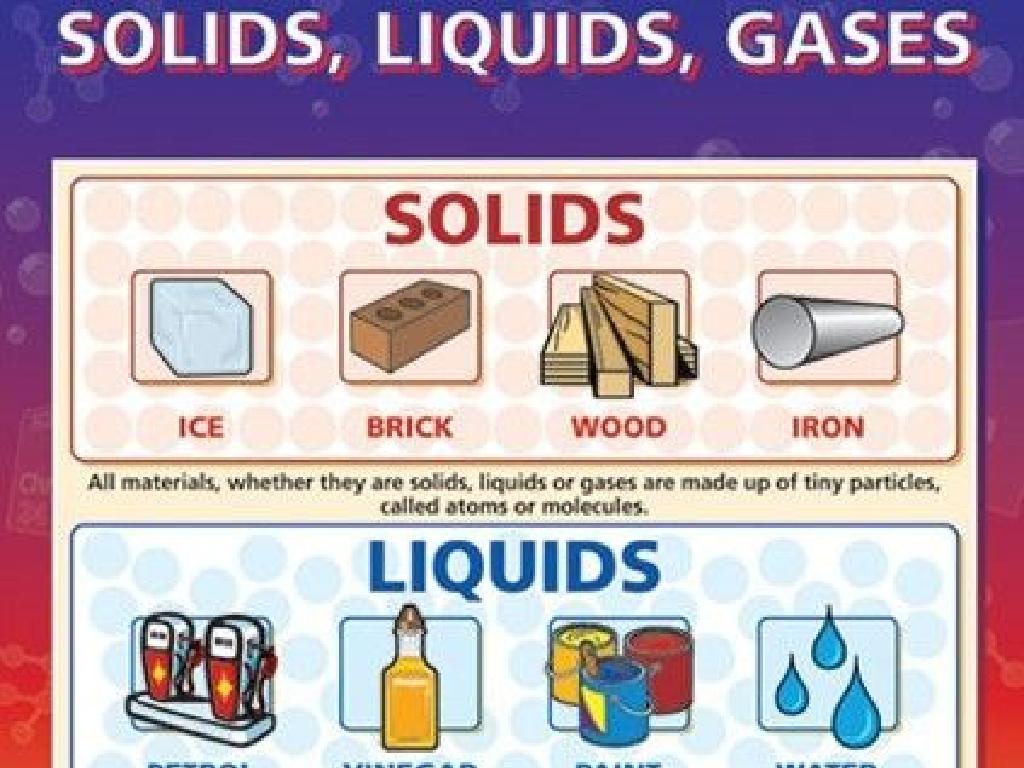Reciprocals
Subject: Math
Grade: Sixth grade
Topic: Divide Fractions
Please LOG IN to download the presentation. Access is available to registered users only.
View More Content
Welcome to Reciprocals!
– What are reciprocals?
– A reciprocal is a flipped fraction, e.g., reciprocal of 1/2 is 2/1.
– Reciprocals in fraction division
– To divide fractions, multiply by the reciprocal of the divisor.
– Mastering reciprocals
– Understanding and finding reciprocals is our main goal.
– Practice problems
|
This slide introduces the concept of reciprocals and their role in dividing fractions. Start by explaining that a reciprocal is what you get when you flip a fraction’s numerator and denominator. Emphasize that when dividing fractions, instead of performing division, we multiply by the reciprocal of the second fraction. The goal for today’s lesson is for students to become comfortable with identifying and using reciprocals. Include practice problems where students find reciprocals of given fractions and use them to divide other fractions. This will help solidify their understanding through application.
Understanding Reciprocals
– Reciprocal definition
– One divided by the number, like 1/n
– Every number’s reciprocal
– Each number has a counterpart, except zero
– Zero’s special case
– Reciprocal examples
– For 1/3, it’s 3; for 2/5, it’s 5/2
|
This slide introduces the concept of reciprocals, which is fundamental when learning to divide fractions. A reciprocal is simply one divided by the number, so the reciprocal of n is 1/n. It’s important to note that every number has a reciprocal except for zero, as division by zero is undefined. Provide examples such as the reciprocal of 1/3 being 3, and the reciprocal of 2/5 being 5/2. Encourage students to think of reciprocals as ‘flipping’ a fraction. Make sure to clarify why zero does not have a reciprocal and discuss the concept of undefined values in mathematics. Have students practice finding reciprocals of various numbers and fractions to solidify their understanding.
Finding Reciprocals
– How to find a reciprocal
– Flip the numerator and denominator
– Example: Reciprocal of 4/7
– Flip 4/7 to get 7/4
– Practice finding reciprocals
– We’ll find reciprocals as a class
– Reciprocal of 5/8
– What’s the reciprocal of 5/8?
|
This slide introduces the concept of reciprocals, which is fundamental when dividing fractions. Start by explaining that the reciprocal of a number is simply flipping the numerator and denominator. Use the example of 4/7 to show this visually, and then guide the class through finding the reciprocal of 5/8. Encourage students to think of the reciprocal as a ‘flip’ and ensure they understand that the reciprocal of a/b is b/a. During the practice, walk around the classroom to assist and check for understanding. This exercise will prepare them for dividing fractions by using reciprocals in later lessons.
Reciprocals and Division
– Dividing fractions by reciprocals
– Example: 3/4 ÷ 2/3 equals 3/4 × 3/2
– Instead of dividing by 2/3, we multiply by its reciprocal, 3/2
– Understanding reciprocals
– A reciprocal is 1 divided by the number, e.g., reciprocal of 2/3 is 3/2
– The ‘undo’ effect of reciprocals
– Multiplying by a reciprocal reverses division, simplifying calculations
|
This slide introduces the concept of reciprocals in the context of dividing fractions. It’s crucial to explain that division by a fraction can be performed by multiplying by that fraction’s reciprocal. Use the example provided to show this process step by step. Clarify the concept of a reciprocal, which is essentially flipping the numerator and denominator of a fraction. Emphasize the ‘undo’ effect of multiplication by a reciprocal, which is a key concept in algebra. Encourage students to practice with additional examples to solidify their understanding.
The Importance of Reciprocals
– Simplify complex fractions
– Turn a division into a multiplication
– Utilized in advanced math
– Essential for algebra, calculus
– Applied in real-life scenarios
– Used in cooking, construction
– Builds a strong math foundation
– Prepares for higher-level concepts
|
Reciprocals are a fundamental concept in mathematics that allow students to simplify complex fraction problems by converting division into multiplication. This skill is not only crucial for understanding advanced mathematical concepts such as algebra and calculus but is also frequently applied in various real-life situations, including cooking and construction. By mastering reciprocals, students lay down a strong foundation for future math learning, enabling them to tackle more challenging problems with confidence. Encourage students to practice finding reciprocals and using them to divide fractions in different contexts to reinforce their understanding.
Class Activity: Reciprocal Relay!
– Form groups for reciprocal race
– Race to find fraction reciprocals
– Flip the numerator and denominator
– Solve division problems using reciprocals
– Use the found reciprocals to divide fractions
– Share solutions and strategies
– Discuss the different methods used
|
This interactive class activity is designed to help students understand the concept of reciprocals in a fun and engaging way. Divide the class into small groups and provide each group with a set of fraction cards. Students will race to find the reciprocals of these fractions by flipping the numerator and denominator. After finding reciprocals, they will apply them to solve division of fraction problems. Once completed, each group will share their solutions and the strategies they used to find the reciprocals and solve the problems. This will foster a collaborative learning environment where students can learn from each other. Possible variations of the activity could include a reciprocal scavenger hunt or reciprocal bingo.
Recap: Reciprocals and Next Steps
– Importance of reciprocals
Reciprocals are key in dividing fractions; they flip the numerator and denominator.
– Homework: Reciprocal worksheet
Complete the worksheet to practice finding and using reciprocals in division.
– Next class: Complex fractions
We’ll tackle more challenging problems involving reciprocals and complex fractions.
– Keep practicing reciprocals
|
As we conclude today’s lesson, remind students of the crucial role reciprocals play in dividing fractions. For homework, they should complete a worksheet designed to reinforce their understanding of finding and using reciprocals. This practice is essential for building a strong foundation. In the next class, we will apply our knowledge of reciprocals to solve more complex fraction problems, further developing our math skills. Encourage students to keep practicing, as mastery comes with repetition and effort.






